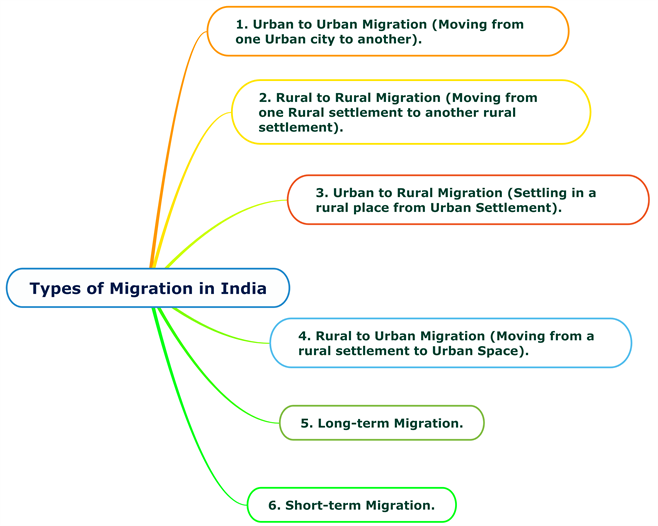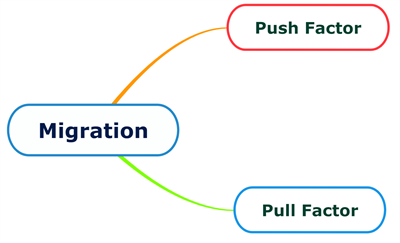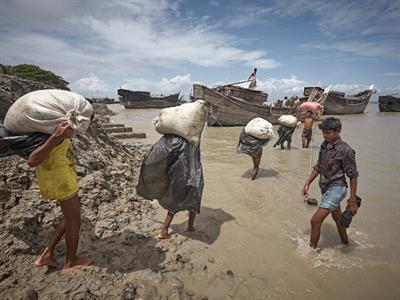PDF chapter test TRY NOW
Migration and its types:
Migration takes place in a country among the people due to various reasons. In India, the phenomena of migration have a distinct character compared to the other countries.
In most of the countries across the world, the process of migration will be to escape the current place and search for a new haven in another country. This is not the case with India, as the migration pattern is unique.

Patterns in Migration:
Migration across the world follows a particular pattern as most of the individuals and migrating parties seek the betterment of their living standards.
In India, migration was seen mostly among the people for their economic well-being and upliftment in the standard of their life.
Some of the common cases seen in India are:
1. People working in Agriculture fields and belonging to agricultural backgrounds aspire for a better living prospect in cities as they migrate from village to city.
2. More migration takes place among the daily wage labours of North India as they seek better socio-economic life in the Southern States. Comparatively, the wage brackets offered in the Southern States are higher than in the Northern States.
3. Sometimes migration takes place due to bigger opportunities for skilled workers working in remote areas.
Factors Causing Migration:
The process of Migration is caused due to various factors. It can be segregated into two types.

1. Push Factors:
Push factors are negative aspects that make the people of a particular place move out from that place. Some of the Push factors are listed below.
- Inadequate essential Services (hospitals, water connection etc)
- Lack of Employment opportunities
- Political and Economic instability
- Agriculture failure or Crop failure
- War or internal rebellions
- Hostile environment conditions

Climate Refugees
2. Pull Factors:
These are positive aspects that are capable of attracting people from one place to the other place.
- Better employment opportunities
- Ideal conditions for living
- Adequate basic amenities
- Low population density
- Less risk of natural hazards
- Better economic and political conditions
